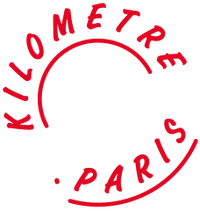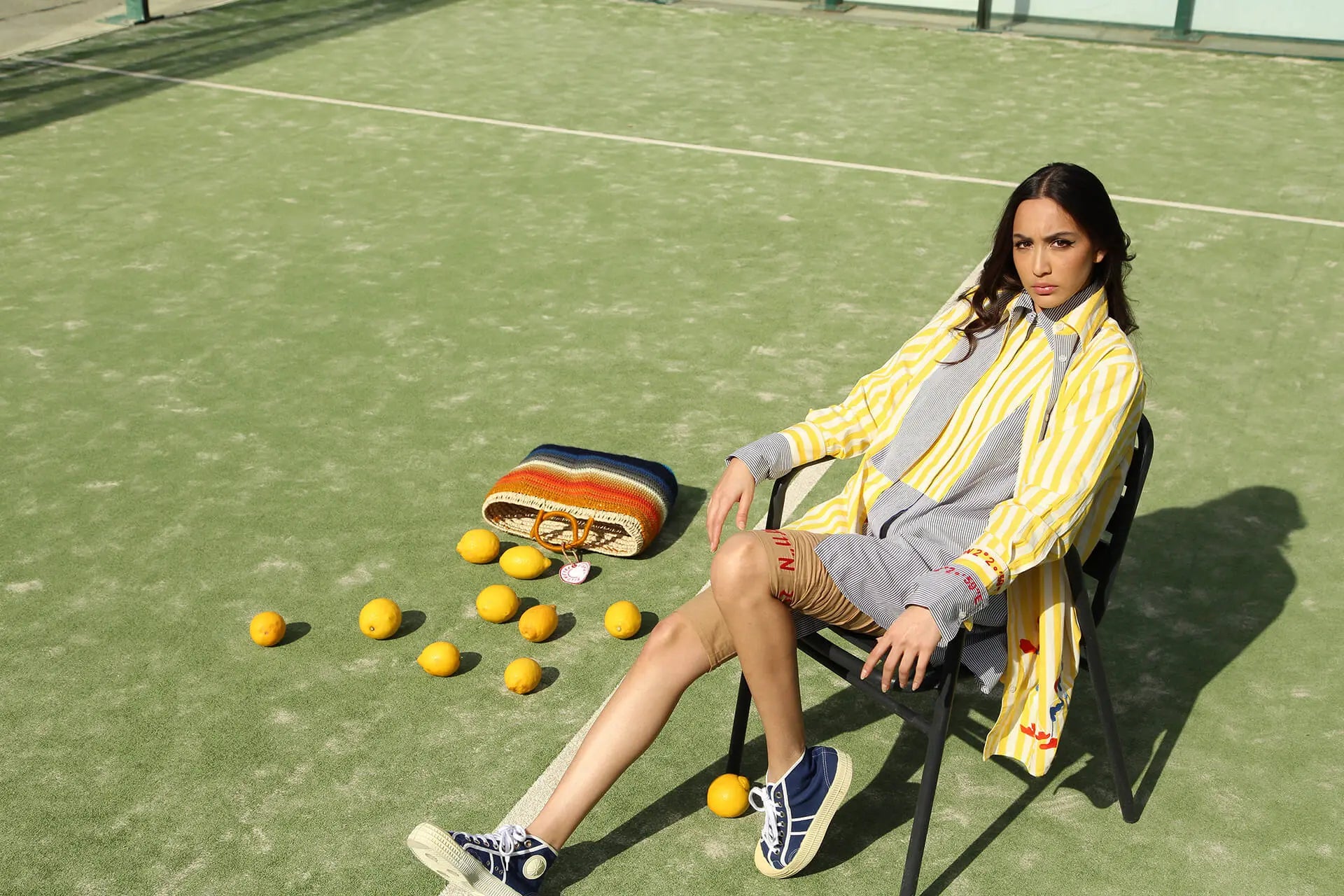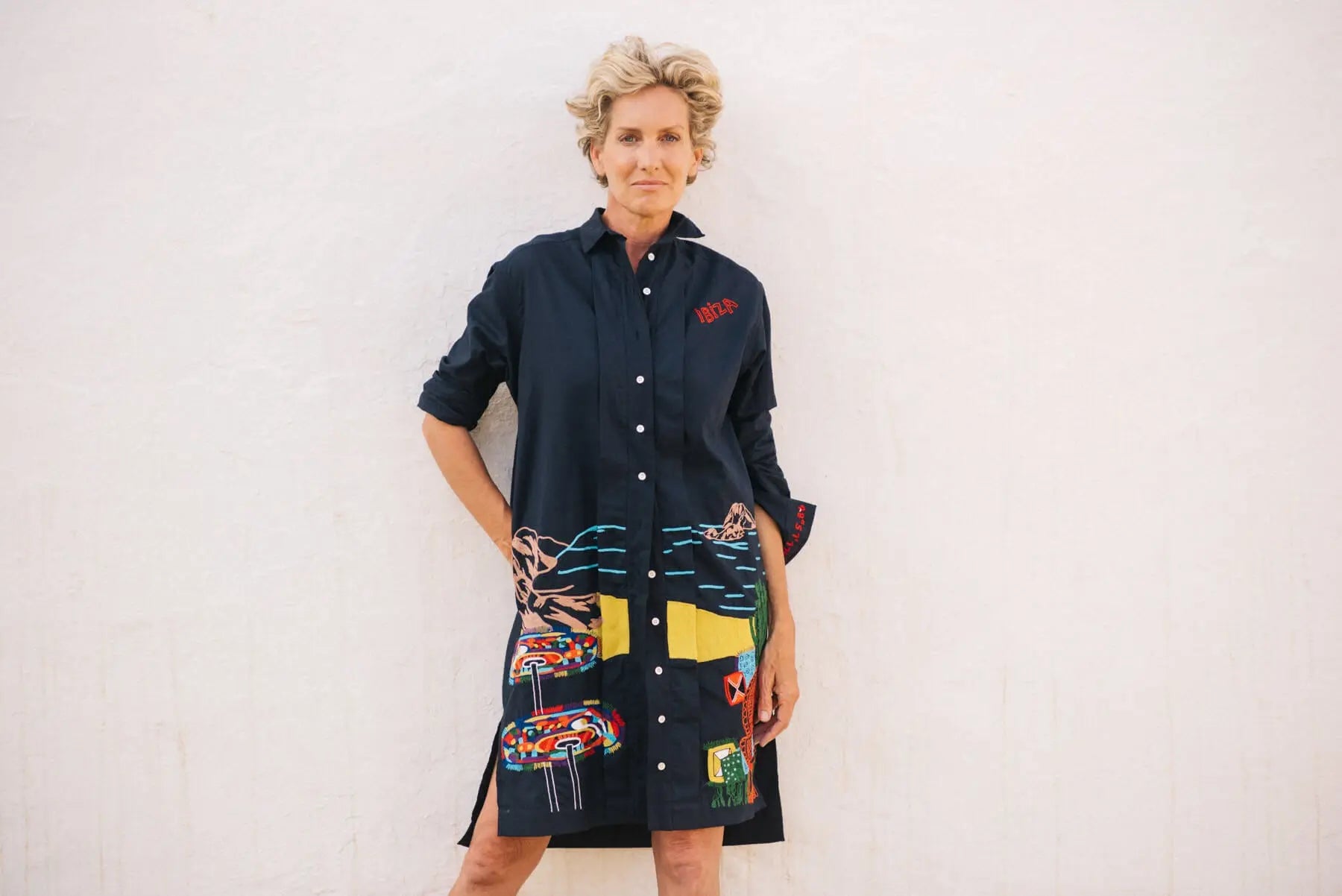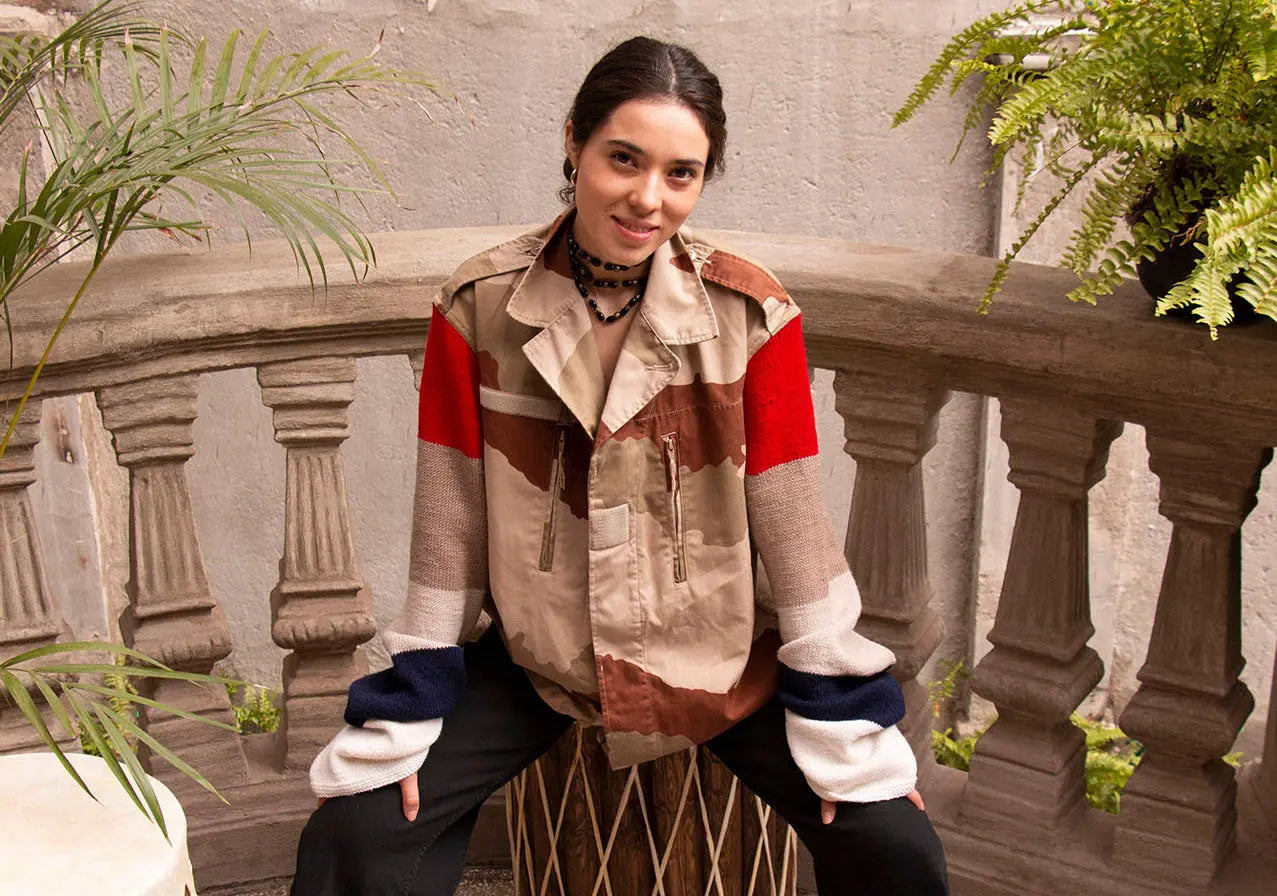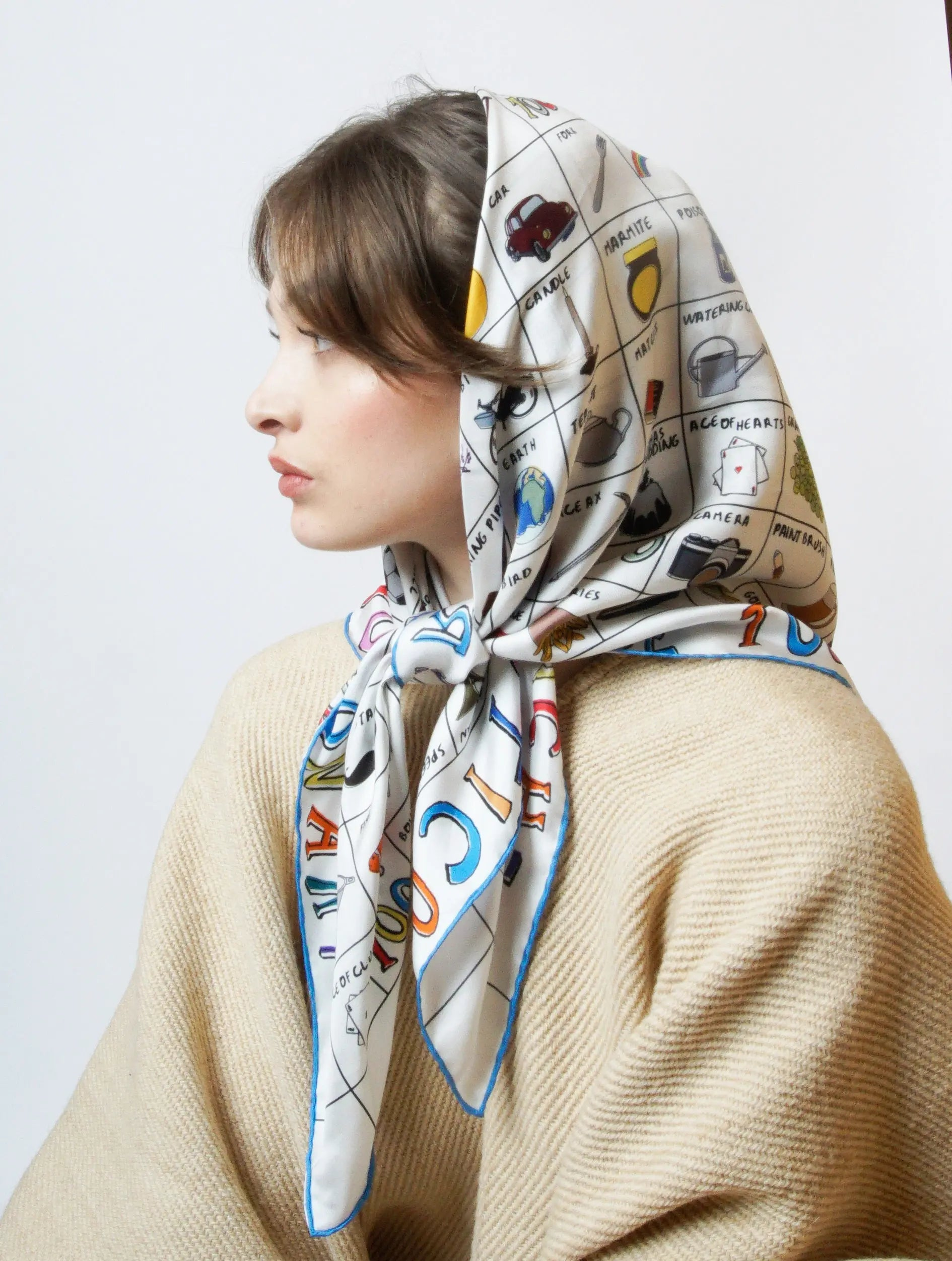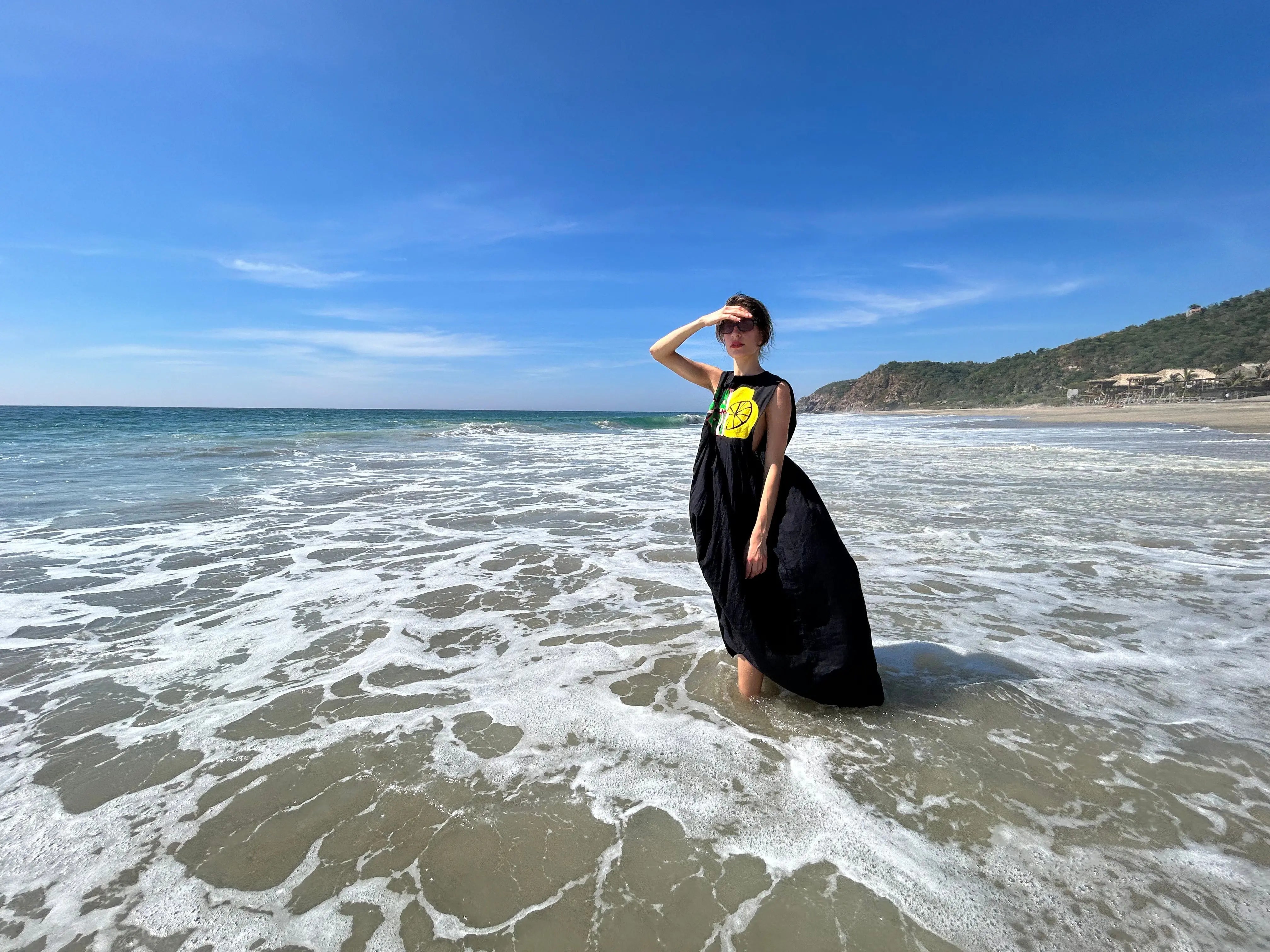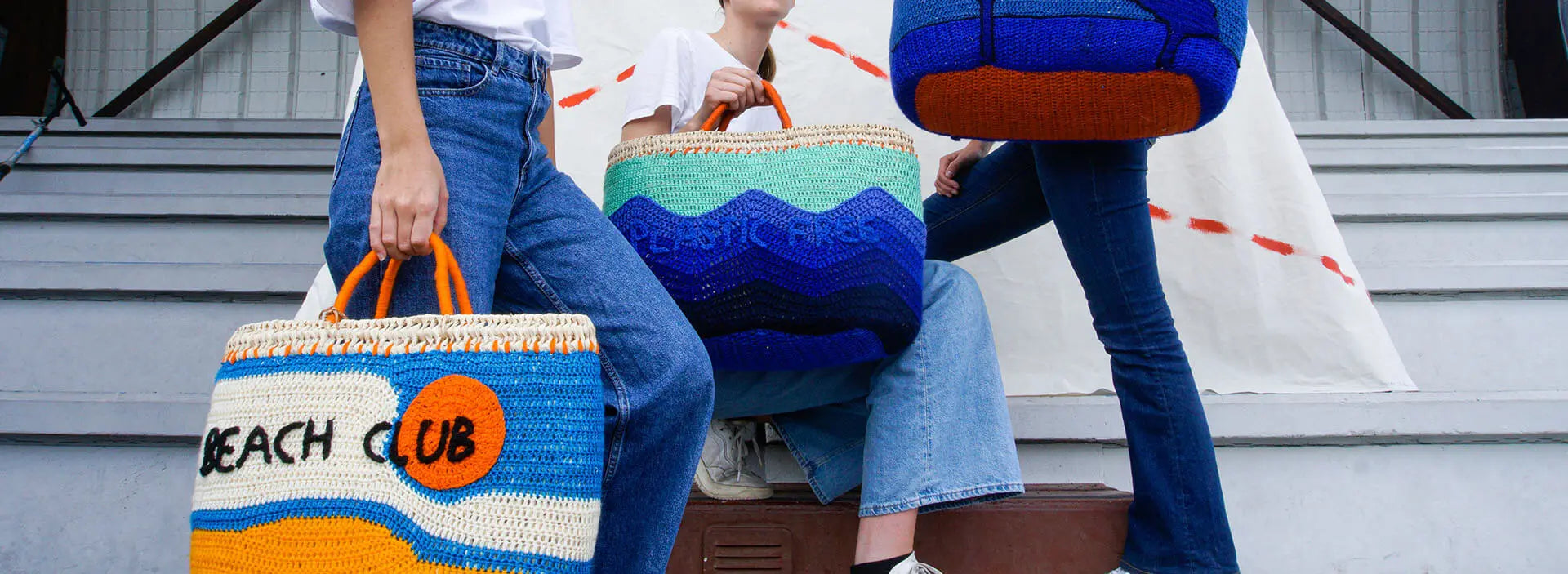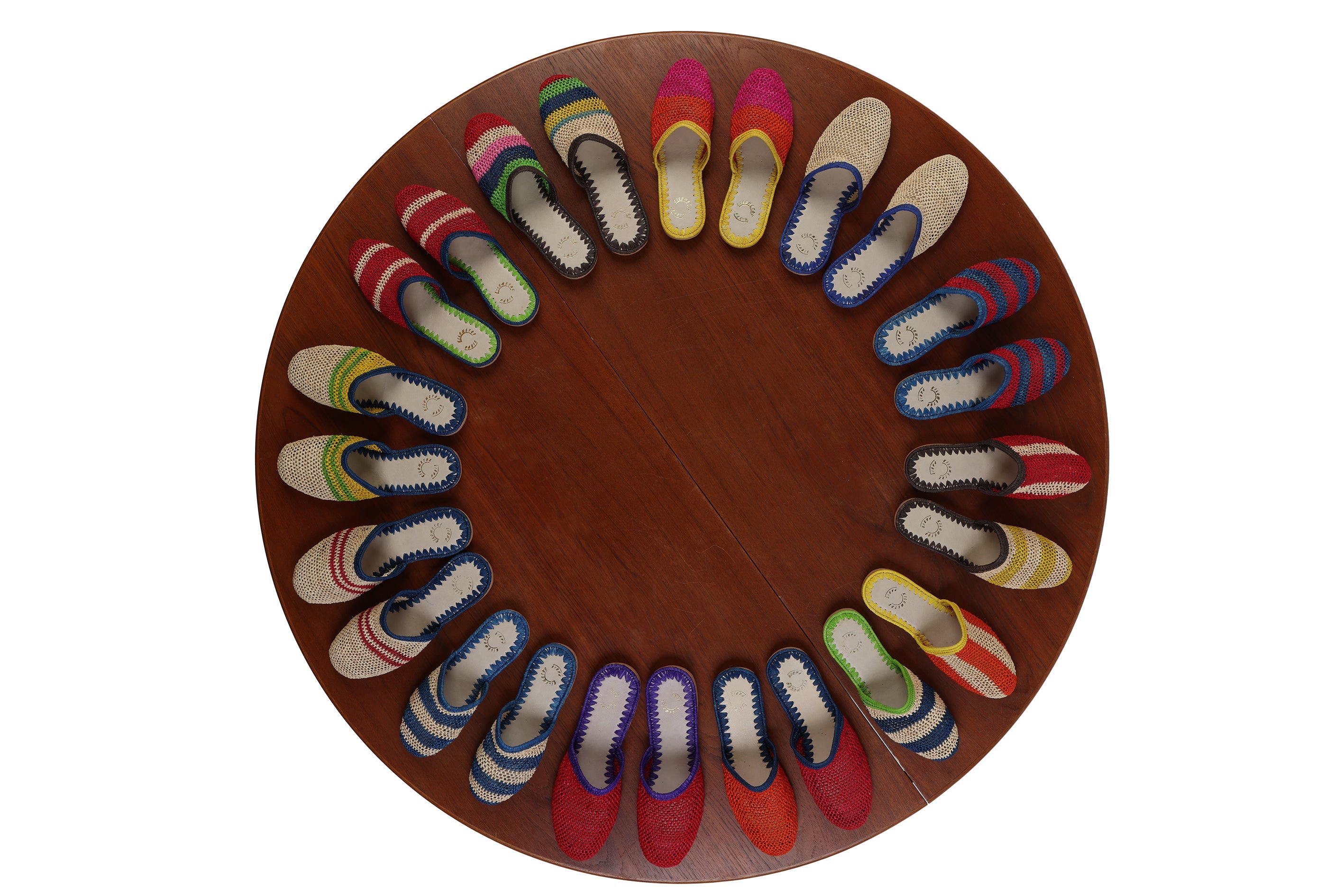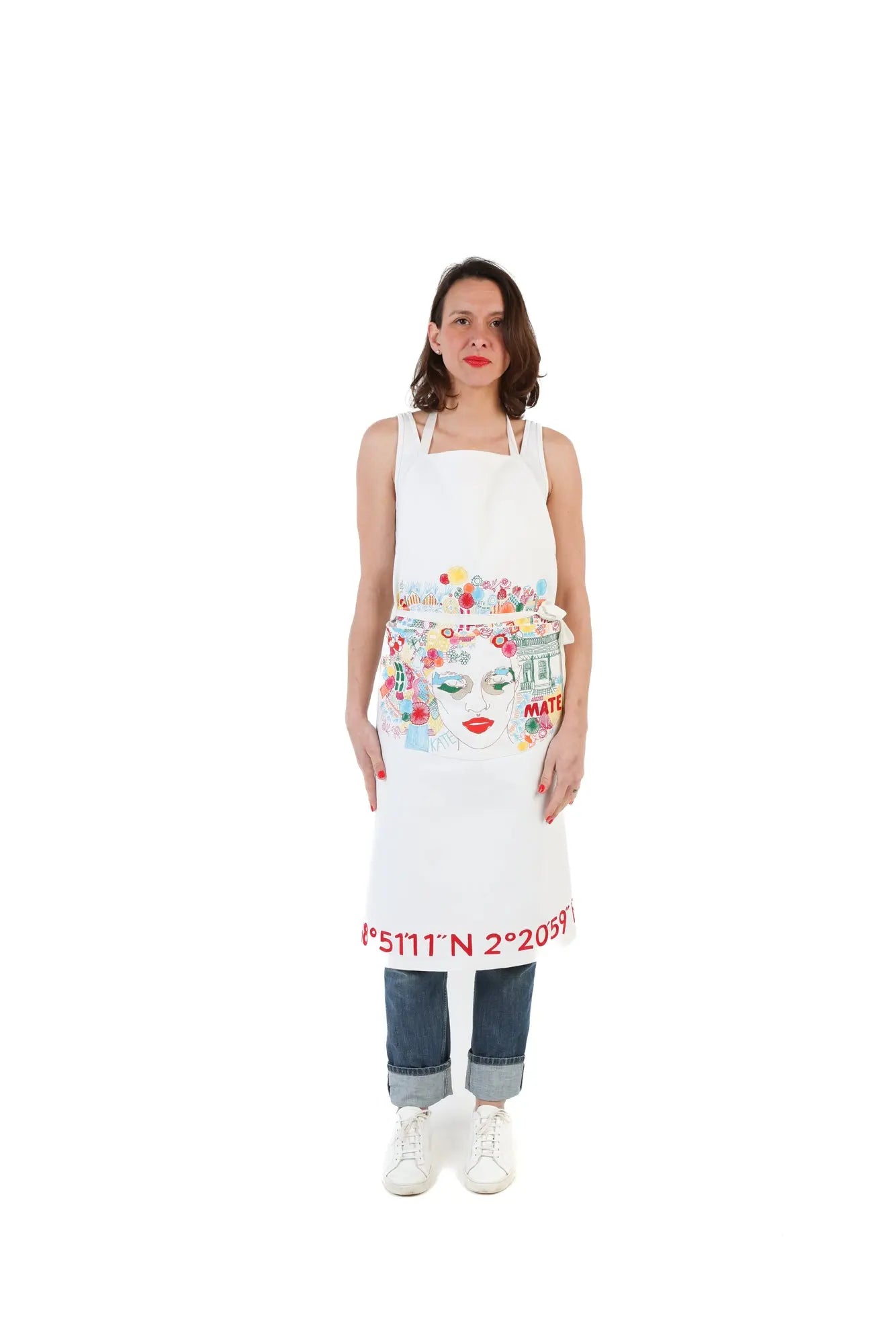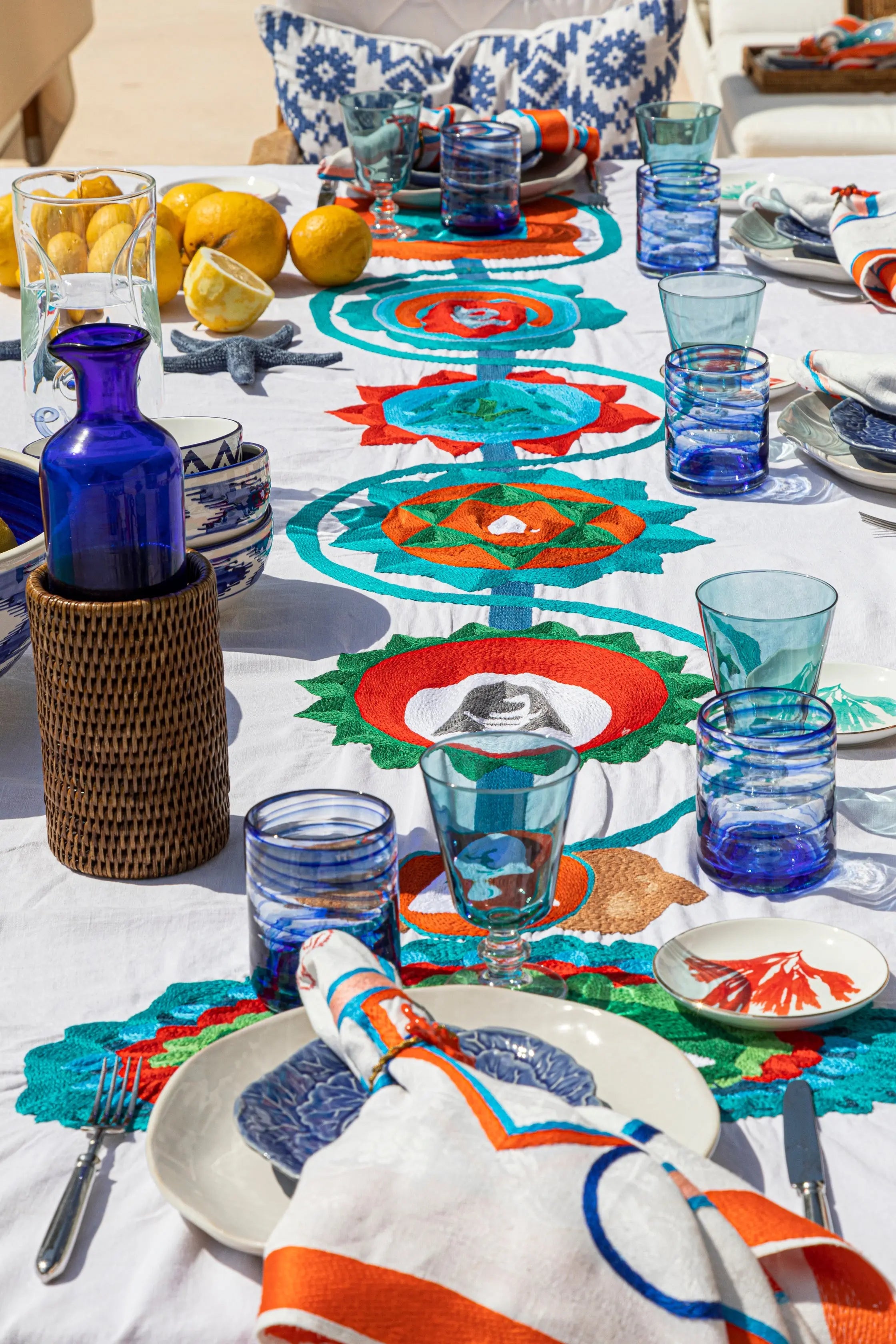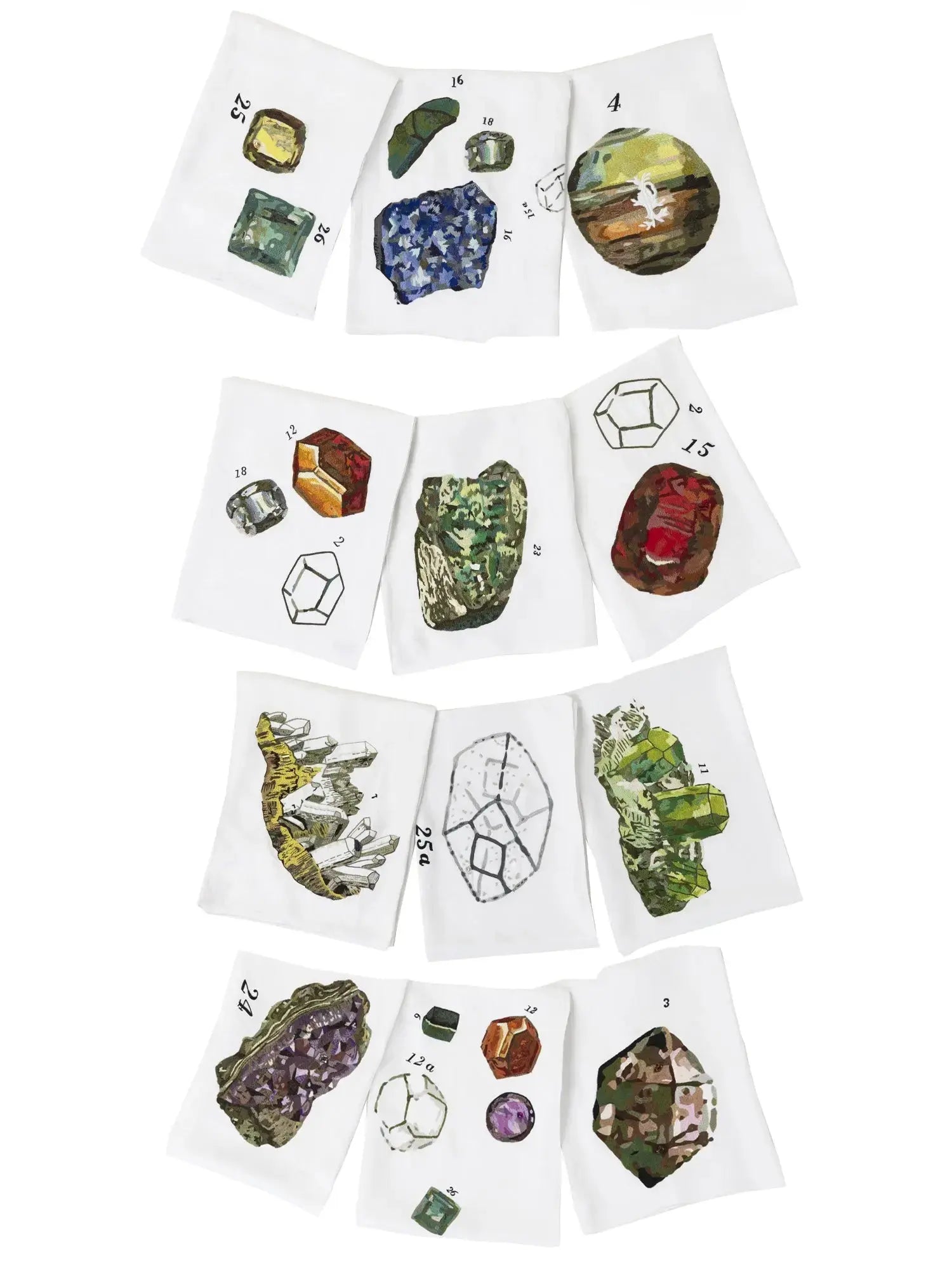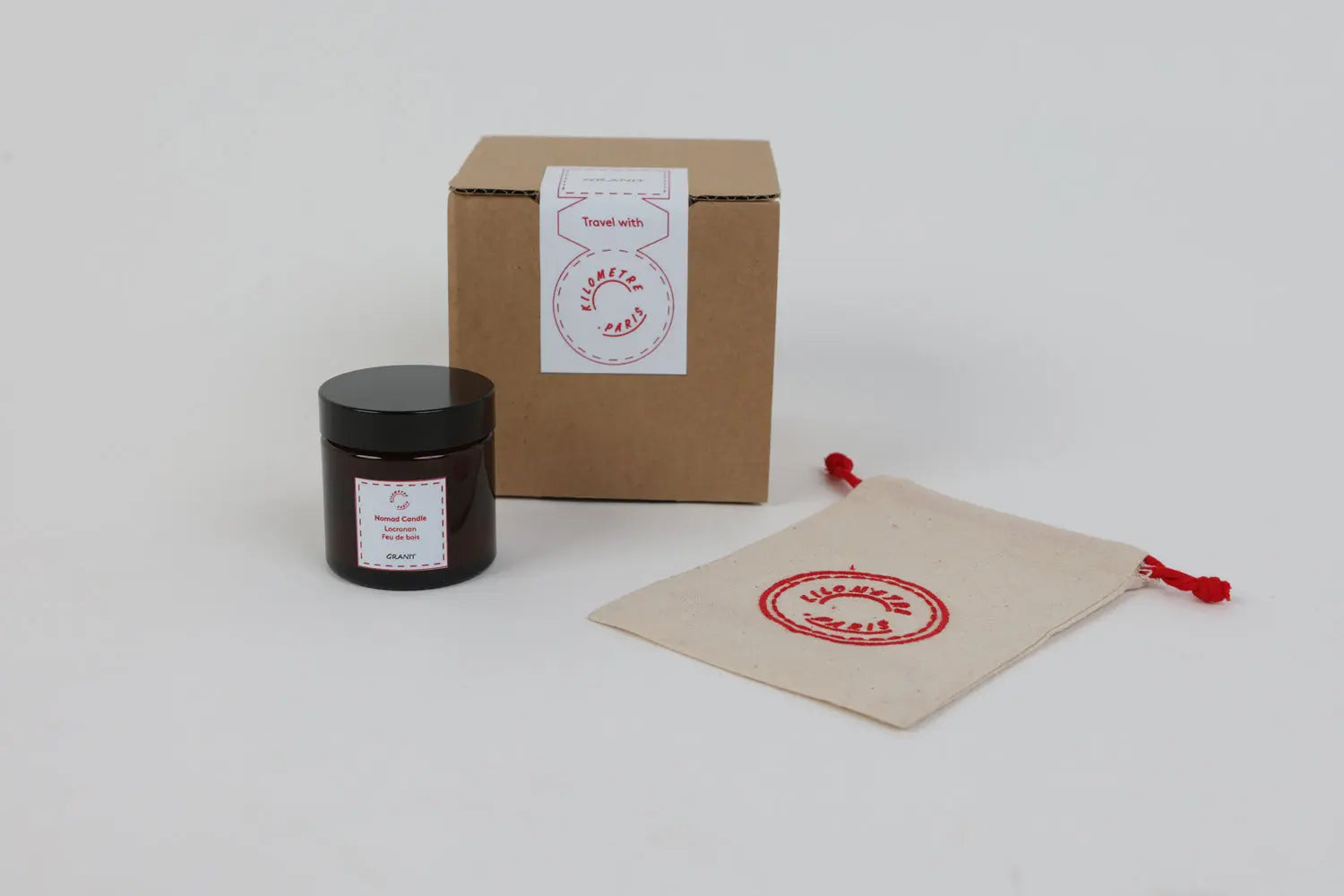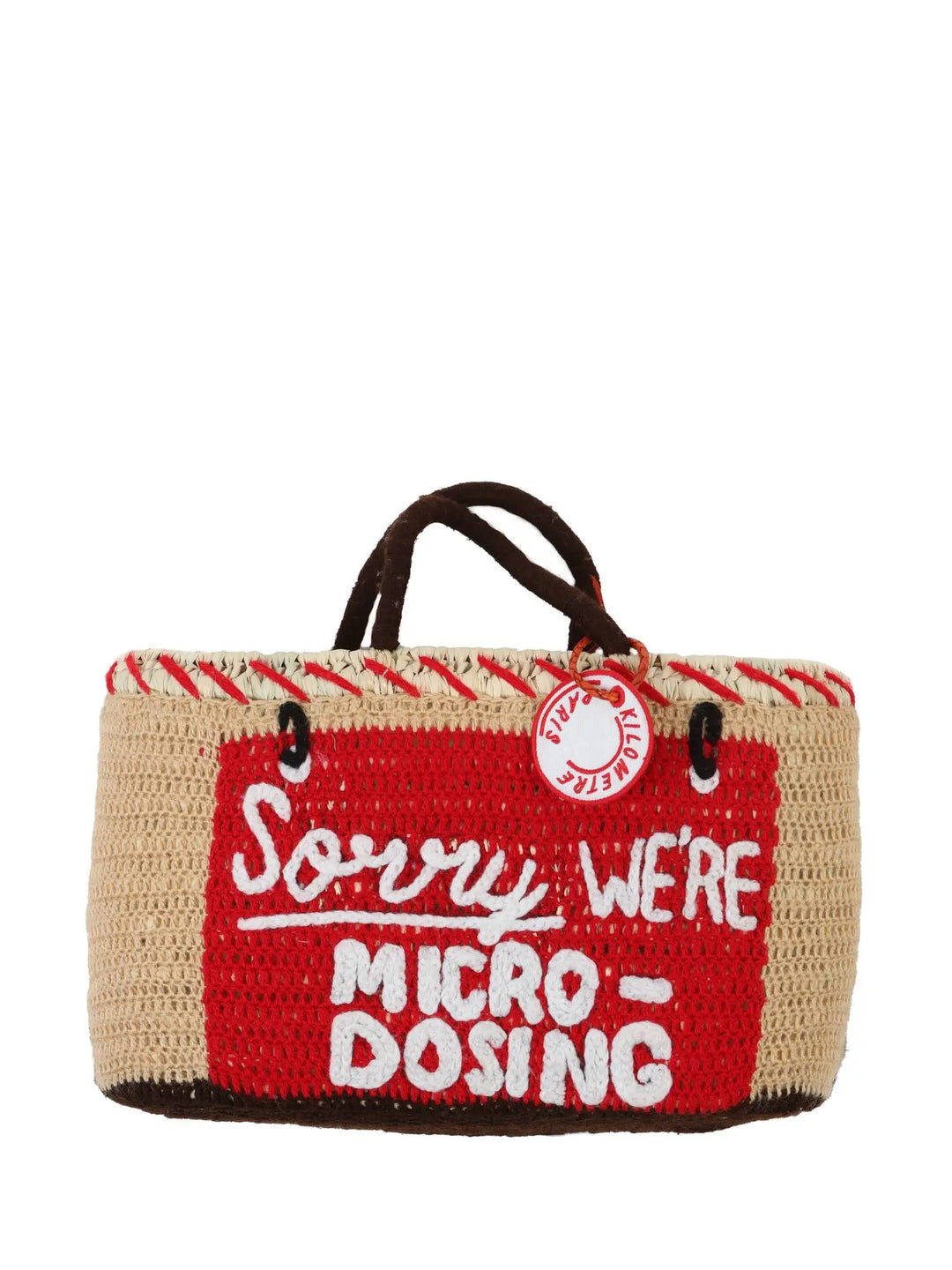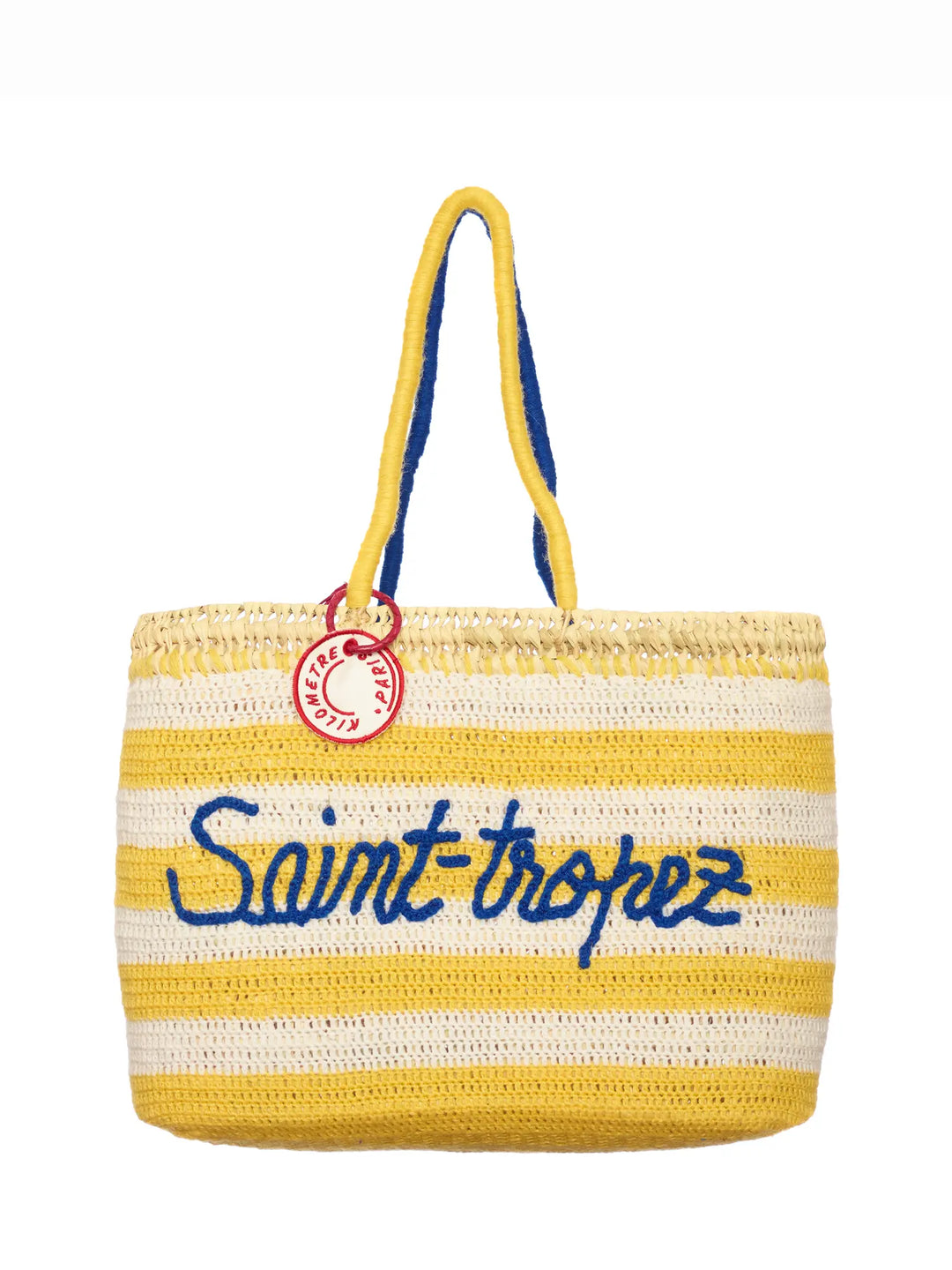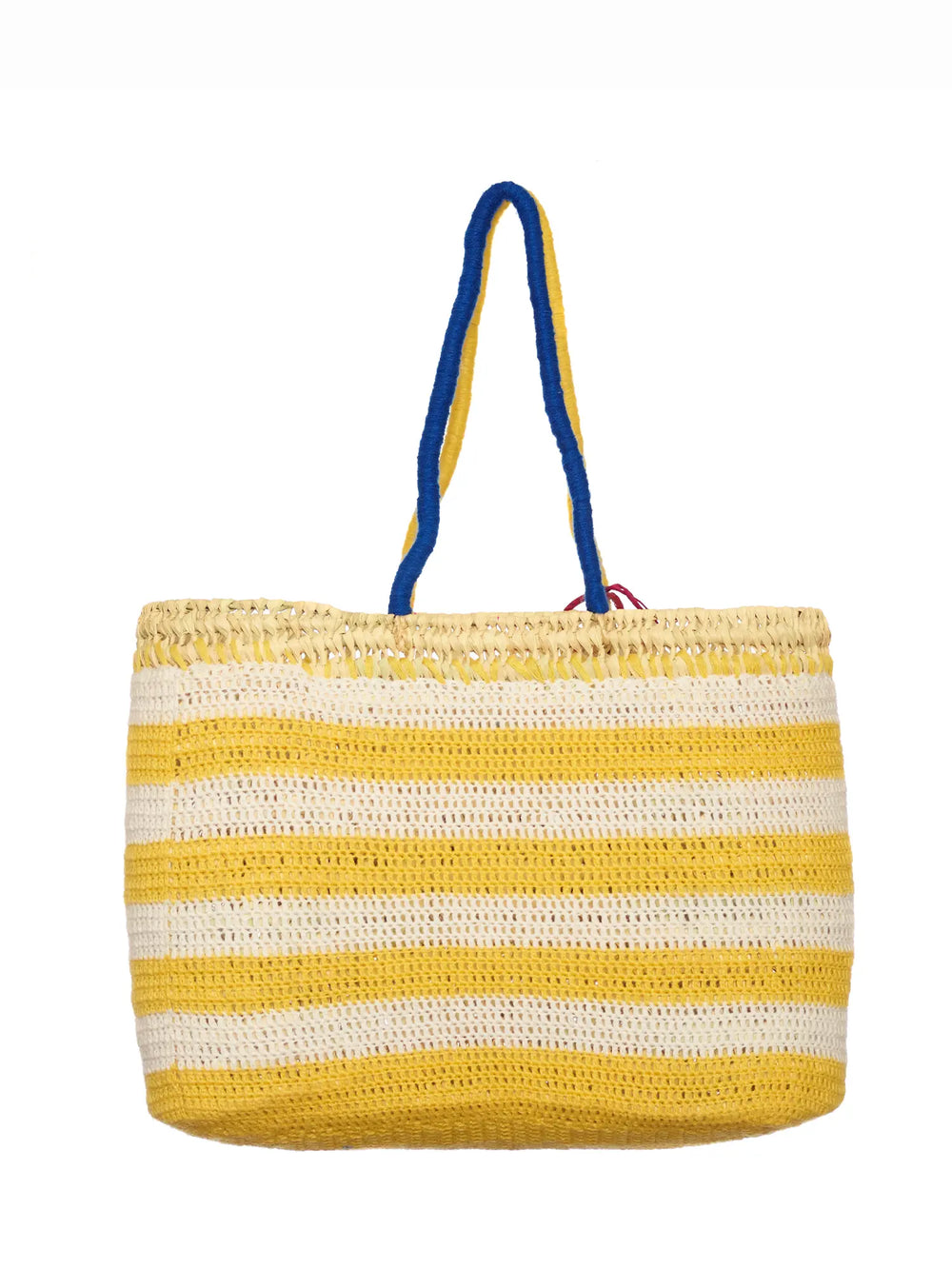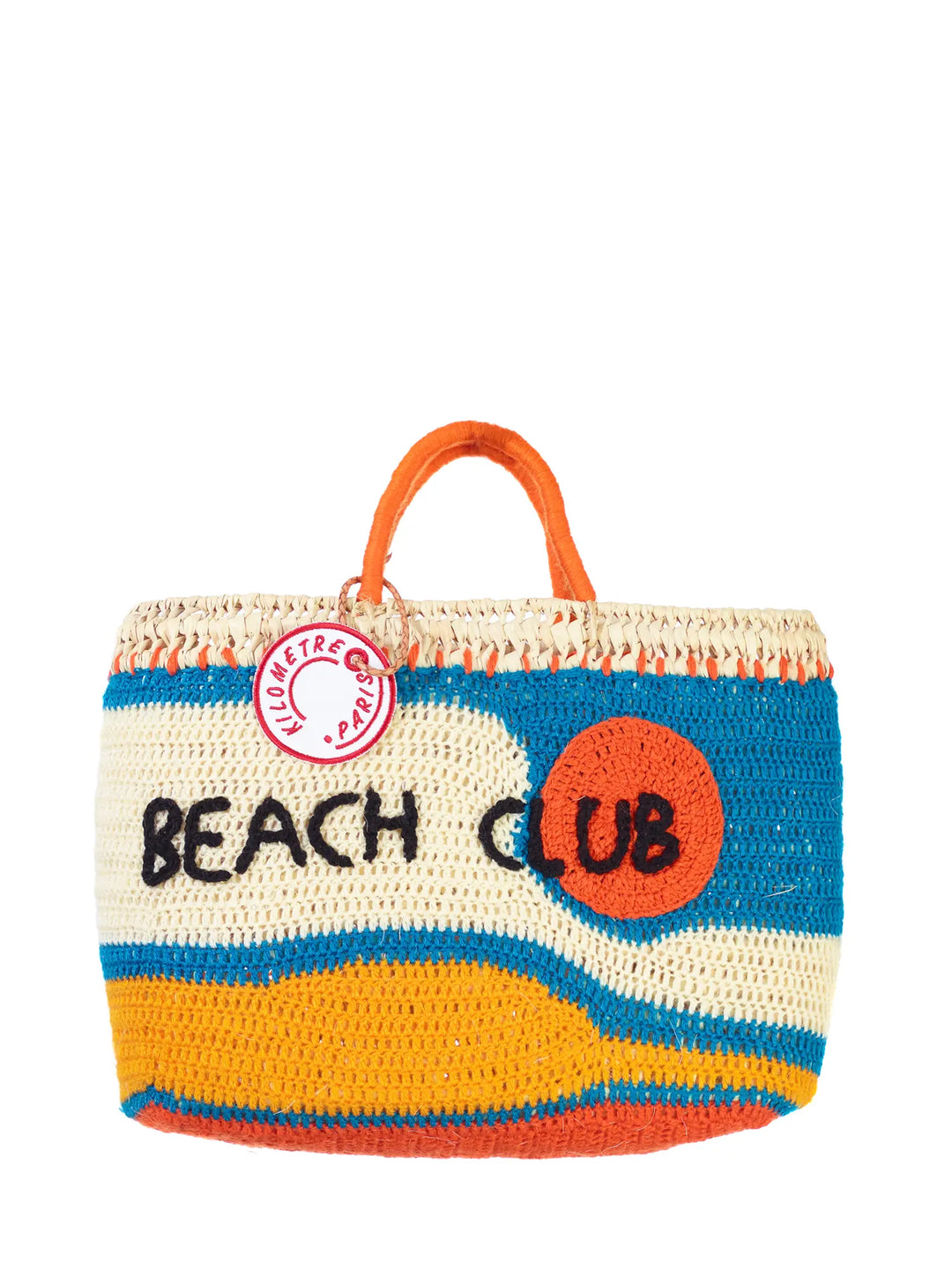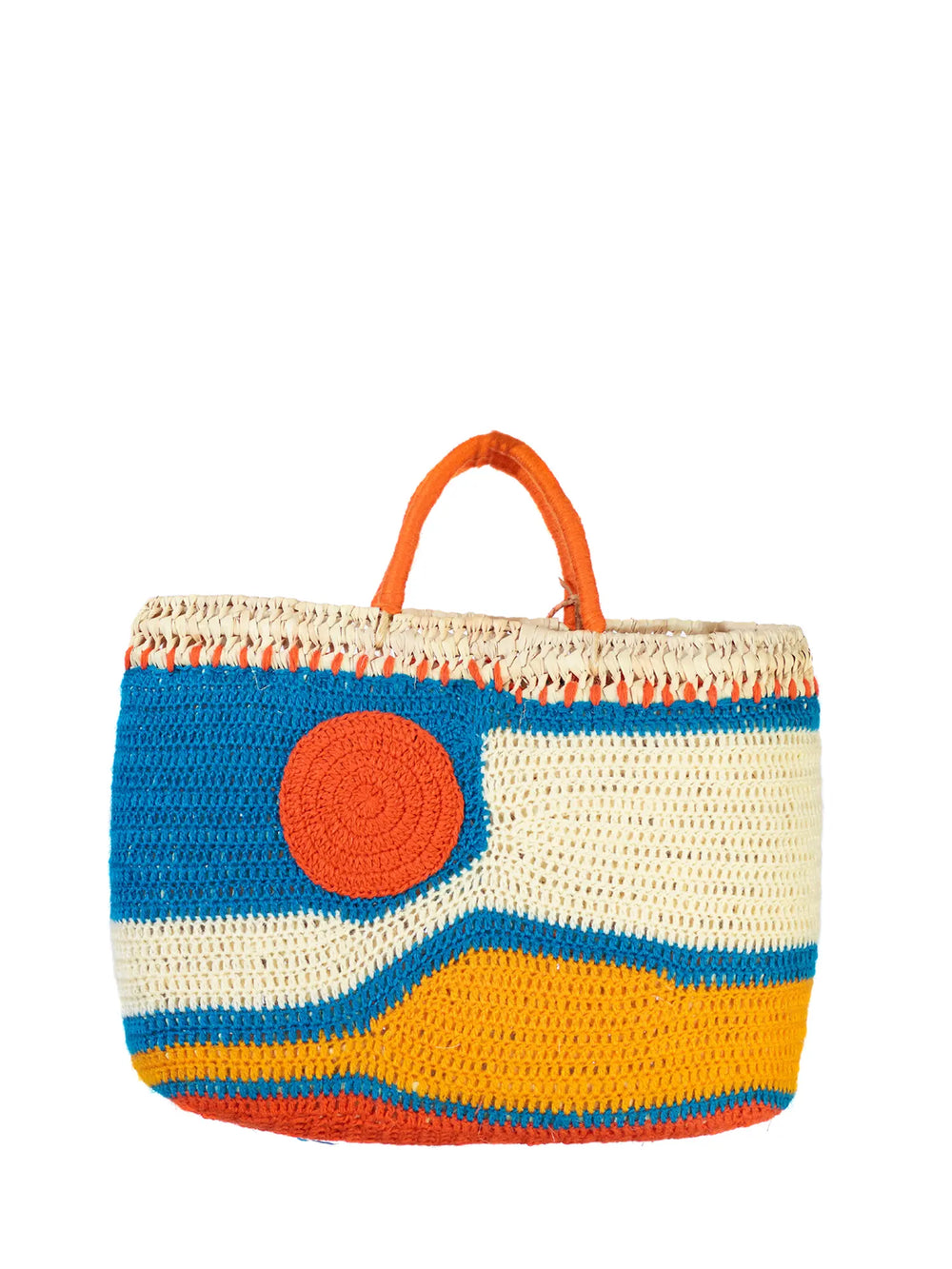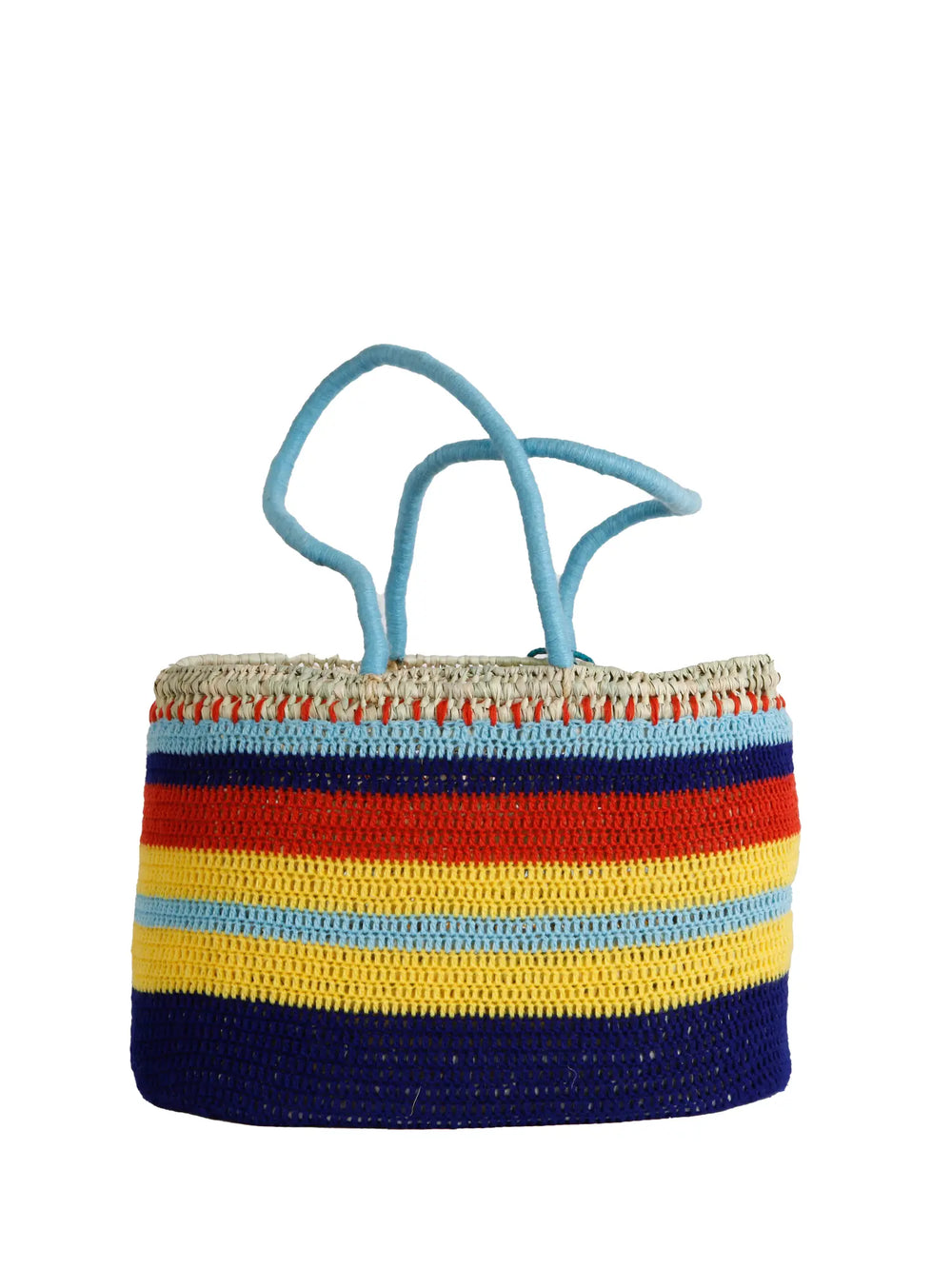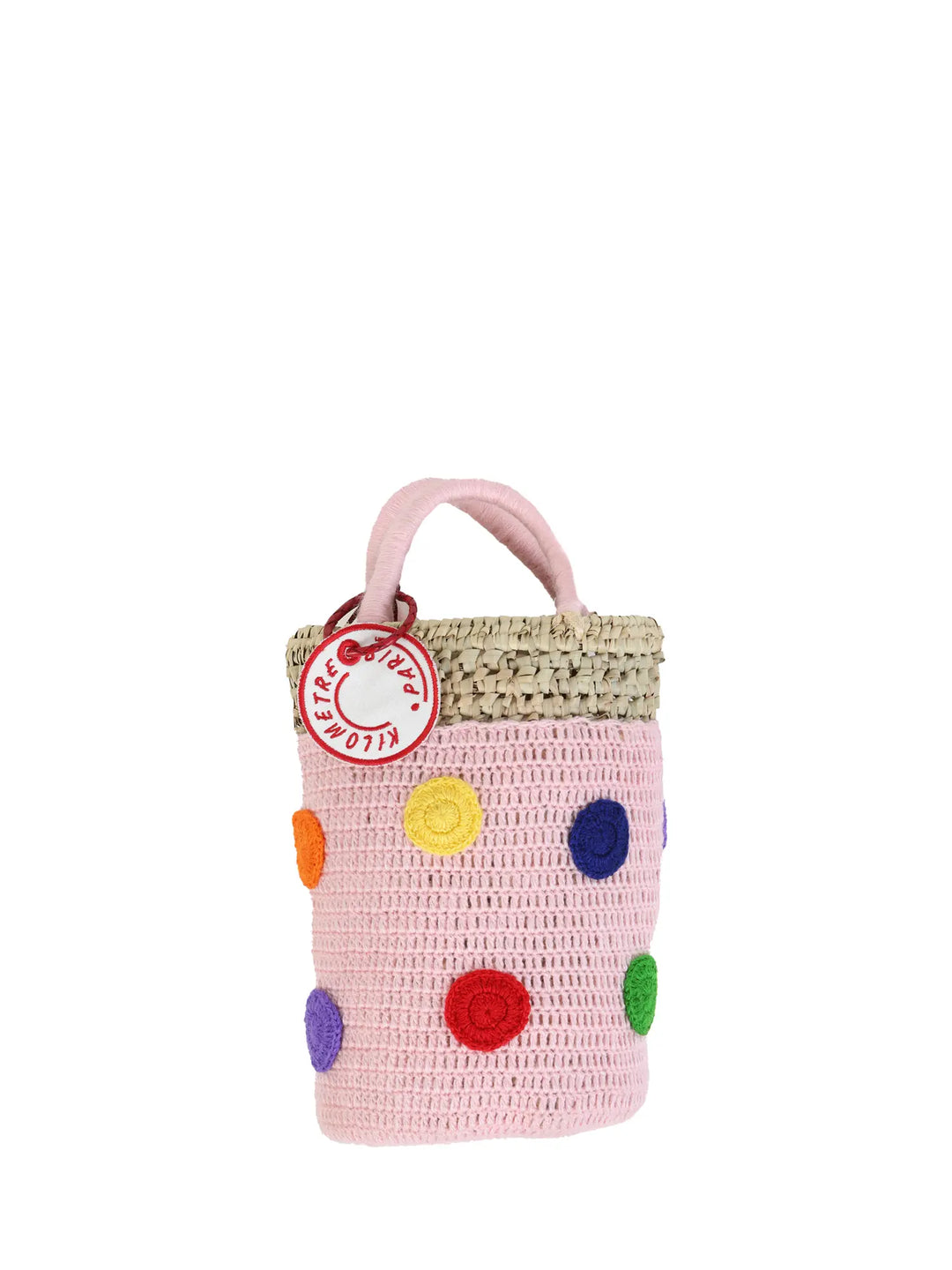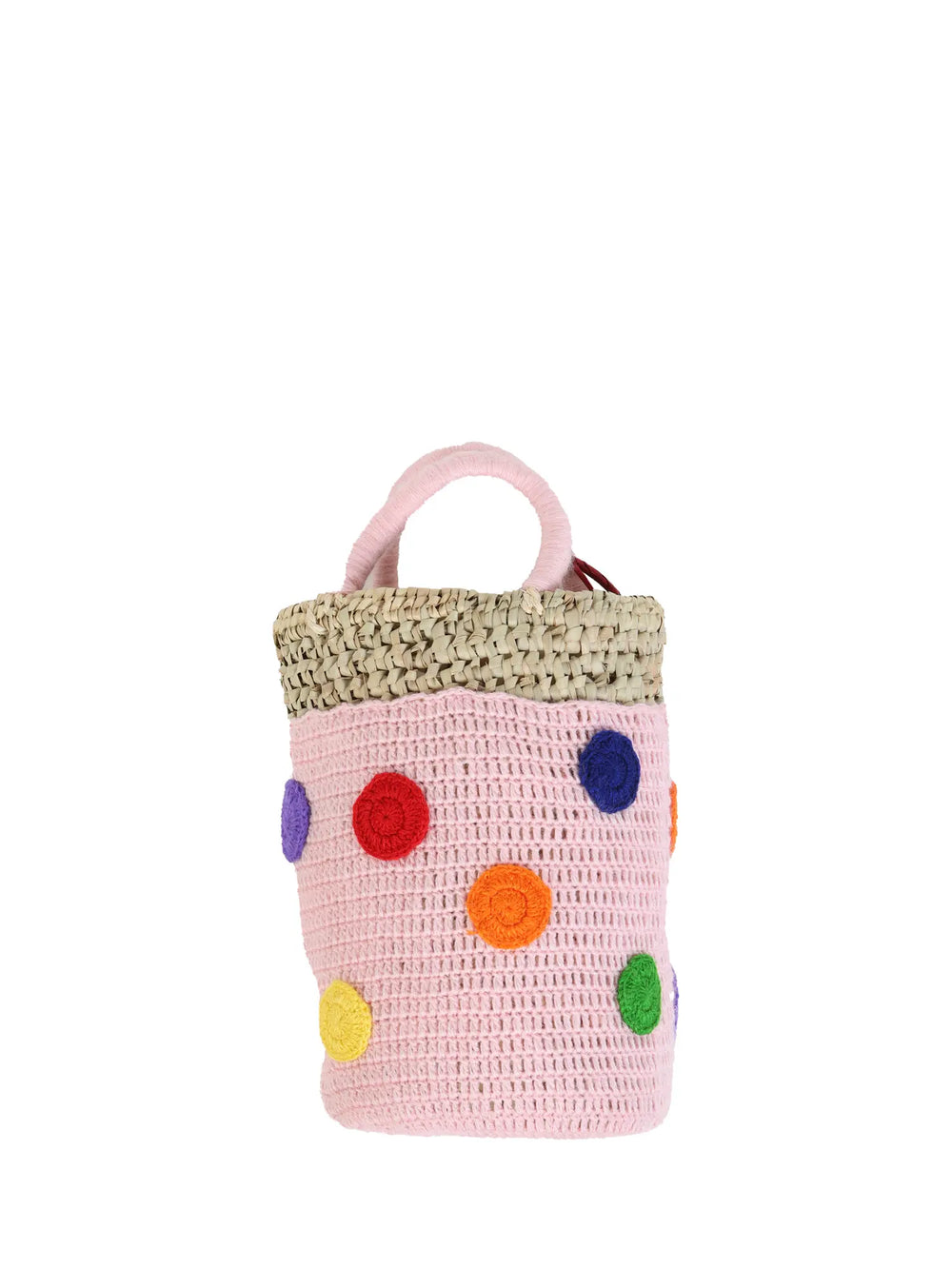
PARIS







Clémence & Didier Krzentowski
We at Kilometre Paris would like to present our muse: Clémence & Didier Krzentowski.
They do not need to leave Paris to dream, though Clémence admits she loves long voyages, Italy stretched like a ribbon, or one day Egypt under the sun, places where time is finally slow. Didier, him, he stays. Paris is his continent, his map complete, his obsession still unfinished. Together they once toured every garden of the city during the silence of Covid, secret enclosures, lawns and gravel paths, discoveries within a city they thought they knew. If she were to take you today, it would be on that same wandering, a promenade from square to square. If he were to guide you, it would be to the Musée des Arts et Métiers, where knives, machines, instruments whisper their secrets.
They speak of the hand with reverence. The artisans they have seen, plumassiers, luthiers, makers of impossible objects, communicate in a language that does not need words. They have watched French designers and Japanese craftsmen exchange only drawings, paper, leather, gestures, until the object itself became a sentence. Like music, they say: a duet you can hear but not translate.
Their gallery, kreo, is a laboratory. A place where designers, released from the constraints of industry, can invent. A bureau whose legs are cast from stones mixed with concrete. A table that carries memory. A chapel in Brittany refitted by Ronan Bouroullec, its glass poured and trembling with light at the edge of the winds. Notre-Dame restored by Guillaume Bardet, an altar in bronze, a chair for the archbishop, candlesticks forged in steel, granite of “nuit celtique” cut from the mountains. From the infinitesimal to the monumental, their projects bend design toward poetry, toward liturgy.
The future: an exhibition of light in September, where lamps float, poised between utility and dream, their names not yet given. Always the same rhythm: designers young and seasoned, each invited to test, to play, to create forms freed from commerce.
They live between the infinitesimal and the infinite: the detail of a cut, the vastness of a cathedral. Paris is their anchor, their gallery a laboratory, and the hand, the artisan’s hand, the designer’s hand, the hand that remembers and transmits, is their compass.
Aure Atika
We at Kilometre Paris would like to present our muse: Aure Atika.
She would lead you through Paris as through a collage. Morning at the Luxembourg, its lawns trimmed by the gardeners of the Senate, a park as perfect as a stage. Then the 10th arrondissement, restaurants of Kurds and Turks, because Paris is not only marble but spice, smoke, mix. At sunset she pulls you to the Cheval Blanc terrace, to see the city burn in gold. Perhaps a cinema in the 5th, a film d’auteur, the kind of screen that holds only forty seats, where Paris breathes in celluloid.
Her métier is the hand, she says. Acting as an artisan’s work, learned by repetition, by practice, by error. Recently she hired a friend’s father to teach her how to drill, saw, hang, repair. Fear turned into pleasure: the joy of making something yourself, of no longer being afraid of tools. A conviction grows: craftsmanship is treasure. The Japanese call their masters “living gods.” She thinks we should too.
She retreats often to the Médoc, where the Atlantic hammers the shore. She has taken up surfing, awkward, imperfect, but joyful. One hour in the water and the mind is clean. Salt as meditation, waves as purification. Books less and less, but the sea itself reads her..
Her origins are multiple, French, Parisian, Moroccan, Hungarian, Sephardic Jewish. She used to say she was French first, Jewish second; now, in the shadow of October 7, she finds the world reversing that order for her, and it feels violent. She resists labels, preferring cuisine, music, dance to define culture rather than categories..
Her career has arcs and turns: La Faute à Voltaire with Abdel Kechiche, a role lived to exhaustion through endless takes, a plunge into the rawness of acting. Years later, Rose by Aurélie Saada alongside Françoise Fabian, a gift of a role, a turning point, a reminder of what cinema can be. Theatre, film, screen, each role another apprenticeship of the hand..
If you gave her a limitless card, she would first enlarge her home, then travel, explore. But always return to craft, to practice, to the sea that cleanses, to Paris that mixes.
Amandine Lepoutre
We at Kilometre Paris would like to present our muse: Amandine Lepoutre.
She begins by following water. Always water. The Seine as compass, a café terrace on Île Saint-Louis where the waiters are gloriously rude, the kind of rudeness that frees her to be silent. Coffee bitter, chocolate ice cream from the Glacier de Notre-Dame, 80% cacao like a sacrament, and then the slow walk downstream, Louvre, bridges, galleries, the unexpected detour that keeps her mind still. Because what she seeks is calm. A way to quiet the constant storm of thought.
The hand, for her, is connection. She takes yours instinctively, touches shoulders, leans forward with a palm open. To make with one’s hands is to offer oneself, to pass emotion into matter. To hold a hand is already to say: you are not invisible. And so, when she speaks of craft, it is not only objects, it is tenderness, the possibility of reconnection in an age that fractures.
With an unlimited card she would not buy things. She would buy distance. Kilometers upon kilometers, deserts red and white, the salt mirror of Salar de Uyuni, lands where silence has no witnesses. Planes, trains, whatever tickets exist, she would burn them all in pursuit of places where solitude is still possible, where time itself loosens its grip.
And yet her real project is not escape but gathering. For years she has created festivals, conferences, exhibitions, always moments of encounter, the electricity of people together in unusual spaces. Today, this impulse has become Art for Action, a foundation that summons artists, writers, performers to speak of peace and human rights through emotion rather than argument. Anish Kapoor draws the Parliament of the Invisibles; JR fills Saint-Marc with his giant faces; Lorraine de Sagazan and Anouk Mongin build a Tower of Babel from the laundries of Venice, 800 kilos of hotel sheets washed by invisible migrant hands. Each work a gesture, each gesture a bridge.
Because Amandine believes change begins not in debate but in feeling. And feeling begins with art.
Chloé Bartoletti
We at Kilometre Paris would like to present our muse: Chloé Bartoletti.
She begins not in a palace but in a banh mi shop, Miss Banh Mi, rue Mandar. An egg sandwich wrapped in paper, carried like treasure to the tip of Île Saint-Louis, eaten with the river at her feet, the sun dropping into gold. She loves Paris most when she is on the Seine, when beer bottles clink with English tourists, when the city insists on mixing strangers, laughter, water, evening.
What fascinates her is the hand, though she says she is not manual herself, she is hypnotised by those who are: artisans who work leather and silk, who hammer gold into buckles, who place collier d’or on bags. This is why Hermès obsesses her: not the brand, but the artisans hidden in the ateliers, their mastery visible in every seam. She believes the best is always handmade.
Chloé is fifty-five. She is the founder of Marlowe, her agency for photographers, directors, set designers, fifteen talents who work image and film, specialising in still life, in luxury, in perfume and beauty. Dior and Clarins call her, the industry knows her precision. With her partner Emilie she has built a studio in Pantin, a courtyard filled with dogs and neighbours, a haven cut out of the raw 19th arrondissement. Mostly women, mostly girl-power, Marlowe feels like a collective, not an office.
When she leaves Paris, she disappears to the Finistère, the bay of Audierne, her house of stone, a century old, standing at the edge of the world. No motorway, no beach club, only kilometres of sand, wind, sea. It is, by coincidence, the village of her grandfather, a return she never planned, a lineage rediscovered. There she lives with her “Breton angels,” silence and horizon.
Give her an unlimited card, and she would go far: first an Hermès bag, yes, but then south, to the Cape of Good Hope where she once had a vision of her daughter before she was born. Then Mexico, Brazil, dunes and deserts, maybe even Australia. She says it plainly: with that card she would not waste time on the near, she would go to the ends of the earth.
Thomas du Pré de Saint Maur
We at Kilometre Paris would like to present our muse: Thomas du Pré de Saint Maur.
He calls himself simply: a Frenchman. Proudly so. Someone who, with the means he has, tries to create as much beauty as possible, in images, in films, in the products he shapes at Chanel, and in the ways he surrounds himself with people he loves, showing them, quietly but firmly, that he loves them.
At Chanel, his title is precise: he directs creation for all fragrance and beauty. Seventeen years now. A love story still alive, still absolute.
If you give him 24 hours in Paris, he takes you not to monuments, not to glamour, but to the flea markets. For him, the puces are the condensed essence of French taste, though the objects are from everywhere. They are a village of treasures, the world’s beauty distilled into stalls. He loves watching the vendors eat their Tupperware lunches; to him, that is more French than the furniture itself, like a scene out of a Jean Gabin film, but still alive. Provided it doesn’t rain.
Ask him about the hand, and he answers with certainty: there is no brain without the hand. The hand guides the mind. Its physicality, its movement, its work, that is what develops thought. Even as a teacher at Sciences Po, he makes his students write by hand, on paper, without devices. They resist at first, then flourish. For him, the hand means attention, and more than that: consideration. In a world where machines, even artificial intelligence, can do almost everything, the hand remains essential. He recalls a phrase by the philosopher Pierre-Charles Roy: “Glissez, mortels, n’appuyez pas.” Glide, do not press. Infinite delicacy. The courtesy owed to the world. Never force things. Never resist the flow of beauty. Just move with it. That is what he tries to do, in his house, in his garden, in Greece.
Because Greece is where another part of his story unfolds. For twenty-five years he has gone, without speaking the language, so he decided to dance it instead. He learned Greek dances, not the invented syrtaki of Zorba, but the vernacular dances of Patmos, of Athens, of villages where music erases age, wealth, difference. Where everyone takes hands and moves together. For him, that is civilization itself. He studied with masters, some of whom traced the migratory flows of peoples through their dances, movements carried from Georgia to the Aegean. The dance of Patmos, Ωκεανός - l’Océanos, is his: slow, bodies pressed together, ocean-born. To him, it is both language and belonging.
And then there is celebration. With Grégoire, he hosts fêtes with no agenda other than friendship. For him, there is nothing more beautiful. Beauty for beauty’s sake, even if it is “superficial”, because the superficial is, in truth, the most important. They married, and may marry again, now that Pope Francis has allowed blessings of same-sex couples in Italy. For Thomas, it is homage, to those who suffered, tortured or burned by institutions for their choices, and testimony that, for a time, the Church permitted it. Grégoire leans baroque, wanting Saint-Pierre. Thomas prefers antique, Saint-Constance. They will try again.
Give him three months and a carte blanche, and he will take his friends to Africa. To confront not theory, not circular economy, but the intelligence of nature itself. He says no design school can rival the design of animals. After that, his ultimate dream: a dinner at the Palazzo Massimo alle Terme in Rome, in the dining room of Livia, wife of Augustus. Frescoes painted 2,200 years ago, buried, preserved, discovered by chance. A panorama of gardens, of birds, fresher than any modern canvas. To dine there, to restore the room to its first function, would be, for him, absolute beauty.
Thomas du Pré de Saint Maur glides, never forcing, always considering. He creates, he celebrates, he dances, he gathers. A Frenchman, yes. But also a witness to fragility, and a keeper of beauty.
Emma Sawko
We at Kilometre Paris would like to present our muse: Emma Sawko.
She starts the day the way others finish it, with a jolt, a jabbing rhythm, the kind of ritual that doesn’t soothe but awakens; one hour of boxing if the body asks to be shaken, one hour of yoga if it begs to be stretched, but either way, a communion, with herself, her breath, her hunger, which isn’t really for food. Hunger for what then? For freedom, perhaps, for calibration, for something raw and just slightly painful to remind her she is alive and alert.
And then, Montreuil. Not for nostalgia, not for style, but for what bubbles and bakes and stews, in the lab, the kitchen, among the clatter of spoons and voices and recipes not yet born. That’s where she goes to see, smell, test, taste, not just to approve but to sense what’s next, what isn’t yet but will be, a new kind of nut milk, a shade of green that didn’t exist last season, a twist of texture that stays on the tongue long after lunch (that she won’t have).
Because lunch, no, lunch is a missed train, a luxury she doesn’t allow herself anymore. It’s been three months, maybe more, since she sat and chewed with time on her side. When she does eat, it’s quick, vegetal, liquid, an açaí bowl, a smoothie, something that slips down the throat while she’s halfway out the door, halfway between one métier and another.
Because there are always at least two.
There’s Wild & The Moon, her fierce garden of plants and pulses and pressed juices that behave like poetry, born in 2016, now sprawling across Paris, Dubai, Amsterdam, Beirut in a month, each space more refuge than restaurant, more gesture than chain. And then there is Comptoir 102, the first, the one that began it all, carved out of the desert like a mirage you could walk into and touch, back when Dubai didn’t know what to do with linen, with silence, with clean beauty or food that came from soil instead of laboratory. Back then it was either ultra-bling or ultra-bleak, and she, she split the difference with taste and tact.
So, during Fashion Week, you’ll find her moving like a current through the Marais, especially rue Charlot, where showrooms hum and cashmere hangs heavy on rails and stylists whisper and everything smells faintly of ambition and sandalwood. She doesn’t stroll, she slices through. Her days are packed, layered, cross-woven like jacquard: showroom, call, tasting, brainstorming, email, child, another showroom, another plate, another city, another idea.
And still, she notices.
She notices when food is made with hands and not machines. She speaks of it not like a trend but like a faith, the fermentation of time, the rebellion against speed, the texture of something slow. For her, the handmade is sacred, because it remembers. It remembers women. It remembers threads. It remembers stories told not in words but in weave, in spoonfuls, in silence. It is emotion made edible, wearable, livable.
So if you gave her three months and no rules, no deadlines, no emails, just a card and a passport and the freedom to vanish, she wouldn’t go to Bali or Mykonos or anywhere you’d expect. No, she dreams of disconnection, real disconnection, the kind that doesn’t have a pool but a path, a forest maybe, or a basket of mushrooms, or nothing. But her mind always returns to Africa, wild, loud, alive. To the soil, to the sound of it, to the pulse that rises through the ground and into the feet and then higher. It’s not a fantasy. It’s a memory. Her father lived for Africa. She feels it in her marrow. She doesn’t know why, but she belongs.
And she’s still building. Quietly, urgently. A clothing line now, Voyage 102, clothes that move, that breathe, that don’t shout but linger. And always the next idea. The next rhythm. The next return.
Emma isn’t a brand. She’s a method. A murmur. A momentum. She builds not just spaces or menus or garments but atmospheres, where the pace is slower, the taste sharper, the light softer. Where something ancestral stirs, and then stays.
Frédéric Walter-Mikaeloff
We at Kilometre Paris would like to present our muse: Frédéric Walter-Mikaeloff.
He moves through the ninth arrondissement as one might move through a personal archive, each pâtisserie, each gallery, each street a chosen memory, carefully stored, precisely folded. If you had 24 hours in Paris, he’d take you nowhere obvious, and everywhere essential.
Start at Sébastien Gaudard’s, where pastry is not indulgence but ritual. A croissant, perhaps. Or an escargot swirled with pastry cream and studded with raisins, eaten not on the run but en route, toward the Musée de la Vie Romantique. Because yes, romance has a museum, and it’s in his neighborhood, behind a garden, inside an artist’s former atelier, where the light filters through leaves like a Vermeer, and the coffee comes with silence.
Lunch, then, not too far. A pâtisserie-sandwicherie hybrid named Komorebi, where Japanese milk buns cradle miso hamburgers and delicate greens. It opened quietly four years ago, but he’s known since day one. Knows also where to buy good pepper: at Kos, the épicerie fine across from Notre-Dame-de-Lorette, where producers are heroes and spice is sacred.
The day folds. A visit to Palais Galliera, the fashion museum that lives inside a garden. Then maybe back, maybe not. He likes the Galerie Paradis, where design becomes archaeology, sofas from the 50s, pieces with memory in the stitching. He doesn’t just look; he absorbs. It’s his moment of inspiration, a breath, a pause, a source.
Because Frédéric works with scent. His métier is fragrance, but not the bottled kind. He speaks of pipettes and precision, of hands weighing molecules, of machines not to replace but to remember, to replicate, to preserve. Perfume, he says, is equal parts idea and gesture. A scent isn’t just composed; it’s crafted, drawn, touched.
And he reaches further. Maison Pomander Walter, a name with weight, with history. Decorative objects that perfume the air like talismans: metals that once held spices and amber, relics of a time when a good scent could ward off illness. He revives that belief, gives it form, breath, presence.
And when you hand him a blank check and three months, he doesn’t rush. He retreats, to Minorca. Not flashy Ibiza or glossy Mallorca, but Minorca, rougher, richer, quiet. An island of hidden coves, unfurnished beaches, prehistoric ruins. A Mediterranean mille-feuille layered with dialects, stones, and salt. You get there on foot. Or by boat. You eat local. You meet artists. You stay.
He’s also building Vegvisir, a consulting agency named after a Nordic compass that once helped sailors navigate unknown seas. Today, it’s for brands adrift, seeking their direction, their why, their scent.
Frédéric doesn’t shout. He doesn’t rush. He curates time, touch, air. And that’s enough to change everything.





Milia Maroum
We at Kilometre Paris would like to present our muse: Milia Maroun.
Her Paris begins on the rue des Martyrs, where she strolls slowly, pausing in cafés, the Greek café she loves, letting the street carry her upward toward the carousel at the top. There are extraordinary bakeries along the way, a sense of neighborhood, of human scale, of light when the weather is kind, it is a street that for her contains enough of Paris, simple and complete.
Ask her of the handmade and she speaks of time and of imperfection. Time, because craft takes it, absorbs it, tells it like Penelope weaving and unweaving; every handmade object holds the hours of its making, and that duration is its poetry. Imperfection, because nothing done by hand is flawless, not a tile, not a knit, not a weave, and in those irregularities lies the human, the reminder that we are on earth and not in the domain of machines. In her own work she uses antique fabrics, woven a century or two ago, cloth that carries not only handwork but history; with time, their value grows rather than diminishes, an inheritance that resists erasure.
If you gave her three months and unlimited means, she says she would give the money away, to those who need it, and go plant potatoes in the Black Forest, seeking time for herself, seeking stillness. And yet in the same breath she admits she might, minutes later, long for the Amazon, for exploration again. Her desires oscillate between roots and horizon, between solitude and the unknown.
She was born in Lebanon, deeply Lebanese, Mediterranean in soul, yet she has lived far beyond it: in Istanbul, in Syria, in Germany, in London, in Paris. Not just traveled but immersed, lived within those places, carried them with her. She says she is much more in love with people than she is mondaine, capable of solitude but drawn to presence. She is esthetic above all, unable to live in dissonance, needing beauty even in austerity, always fighting to preserve harmony in her surroundings, in her work, in her family life. Today she divides herself between Paris and the Black Forest, between city and forest, between solitude and exchange.
Her label is Kimabaya, a fusion of kimono and abaya, of Far East and Levant, shaped into coats that resemble caftans, garments that are less fashion than cultural story. There are casual, easy, everyday versions, and there are the unique collector’s pieces made from antique fabrics, precious because the cloth itself is precious. In both, there is continuity: a garment as vessel of history, of peoples, of femininity and of genre, a crossing of geographies sewn into form.
Milia Maroun is not only Lebanese, not only Parisian, not only designer. She is a woman of in-betweens, East and West, solitude and communion, permanence and movement. Her work and her life both carry the same conviction: that beauty, hand, and history must always be fused, and that harmony is not decoration but survival.
Matthieu Salvaing
We at Kilometre Paris would like to present our muse: Matthieu Salvaing.
He begins his Paris at Nemours, his Flore, his anchor, where a glass of rosé in the morning feels as natural as coffee. Lunch at Café de l’Époque, dinner maybe nowhere but with friends, then always the Fondation Pinault, because he holds the membership and because the exhibitions never disappoint. He stays within his quartier, loyal to its rhythm, until the bicycle pulls him farther: rue de Bretagne for friends, Bastille for a fête, the quais for a picnic, Saint-Germain for groceries. For Matthieu, Paris is mapped not by streets but by people. He quadrilles the city by friendship, rides it by bike morning to night, a southern temperament guiding a Parisian life.
Ask him about the handmade and he answers with simplicity: it is the micro-imperfection that makes the difference, the irregular letter cut by hand that gives humanity to typography, the burger cooked by someone you love instead of a machine. The hand inserts the human dimension into the object; it is the element that changes everything.
And if you gave him three months and a limitless card, he would not rest, he would produce. Films and photographs, the most beautiful in the world, collected in a book, carried across continents. His dream is not of stillness but of images made tangible, bound, transmitted.
He was born in Camargue, near Aigues-Mortes. As a child, he took his father’s camera, not the best student in words, he found his path in the visual, and photography became his passport out. He assisted photographers who shot corridas, discovered Arles when it was already the mecca of photography, and from there built a métier of interiors, of architecture, of design. He loves houses marked by defects, by human trace, a ceiling in Calcutta where palm leaves were pressed into mud, a cushion worn to threads, discoveries in Ethiopia, Togo, Benin where colors and materials mix without rule, where vernacular invention outshines theory. His work is anthropological as much as aesthetic: each object, each room, each wall tells of the people who live within it.
His books are chapters of this gaze: two on Oscar Niemeyer, one called Voyage intérieur, another Beyrouth moderniste, and more to come, projects in waiting, identity doubled and redoubled. He guards their names, but says only that they are him, multiplied.
Matthieu Salvaing is not simply a photographer of interiors. He is a seeker of irregularities, a recorder of defects, a lover of spaces made human by touch. His work is less about capturing perfection than about showing how the imperfect carries the soul of the world.
Nicolás, Maxime Smaller & Nico
We at Kilometre Paris would like to present our muse: Maxime Smoller.
He calls himself an anti-hairdresser. Not because he doesn’t touch hair, he does, constantly, but because he refuses the rituals, the shampoos, the scissors, the small talk. He isn’t interested in coiffure. He is interested in blond. Only blond. For him, blond is a spectrum, a mood, a magnet, a way of flattering the skin, softening the face, giving the illusion of travel, of light, of reinvention. Every head of hair becomes a canvas, every shade of blond its own story. Not “golden,” not “ash,” not “platinum”, but Alex’s blond, the blond lived, the blond carried through sun and time until it shifts into something personal, unrepeatable.
He arrived at this métier by accident, through a meeting ten years ago with Franck, who first opened the space where Maxime now works. When Franck stepped away, Maxime took the concept and pushed it further, deeper, into the singular devotion of blond.
But hair is only one chapter. Clothes are another. Maxime does not tell stories in words, he tells them in fabric, in silhouettes gathered from travels that always begin with three suitcases and often end with excess baggage. Shoes from a dance shop in Asakusa, worn without rhythm but with ease. A tablier stained with color, worn not to protect but to beautify, like a canvas catching paint. For him, garments carry patina like skin, like memory, their wear is their worth.
Travel is both escape and revelation. Japan, especially, was a meeting: aesthetic, spiritual, emotional. In Naoshima and Teshima, among domes shaped like raindrops, he found vibration, not the city’s, not another’s, but his own. He describes it as alignment, the sudden collapse of fear into presence, standing on the Seto Sea as mist blurred the mountains and the rain turned the world into cotton. Japan struck him as paradox: hard as onyx, concrete, brutal, yet soft as thick cotton, muted, translucent, porous. It mirrored his own paradoxes. He returned carrying that duality, and also, stains on his apron.
Give him 24 hours in Paris and he’ll take you through cliché made luminous. Breakfast on a terrace, a croissant, a coffee, but mostly the act of watching. Then to the Grand Palais for an interactive exhibition, children running, art that laughs. Lunch at the Fondation Pinault, where light is as generous as the staff. Walking, always walking, through quays, passages, up to Sacré-Cœur. Ending with cocktails at Maison Souquet, a boudoir where history hasn’t been erased but preserved. A day like tourists, yes, but like Americans discovering Paris with innocence and awe.
Ask him about the hand, and he answers with energy. The hand transmits. A gesture is never neutral: whether of a dancer, a surgeon, a waiter, a hairdresser, it always gives something, receives something. Touch is exchange. Repetition refines it, sharpens it, makes it resonate. He cites Liu Fan, the repetition of the same stroke until perfection emerges. The same with blond. The same with life.
And if you gave him a black card and three months with no work? He wouldn’t flee Paris. He’d go to Le Bon Marché. He’d build looks, invent stories, buy perfume for every hour of the day. Fashion as narrative, fragrance as punctuation. A wardrobe of tales, lived on sidewalks, in terraces, in evenings that begin with cocktails and end in laughter. Not Héloïse at the Plaza, but Maxime at Bon Marché.
Maxime is not a coiffeur. He is not even just a colorist. He is a storyteller of blond, of fabric, of gesture. An archivist of vibration. A paradox, softened and sharpened at once.
Julie Mamou-Mani
We at Kilometre Paris would like to present our muse: Julie Mamou-Mani.
Her Paris is Abbesses, not the postcard but the backstreet, the bar-tabac that has no name, the kind you’d mistake for an office if you didn’t know better, except here the servers know her, the neighbors lean on the counter, the air thick with half-finished conversations. From there she drifts to her ordonnances, her small cures: the Musée de la Vie Romantique where George Sand still lingers like perfume in the curtains, or Gustave Moreau’s house with its staircase coiling toward myth, drawers jammed with lions, birds, visions half erased. Places that are not visits but refuges, where time loosens its grip and you forget the city still spins outside.
For lunch she chooses La Bossue, a place of soups, quiches, cakes and bread all made by hand, where brunch is nothing less than joy served warm. And when tension climbs, she climbs too, the steps of Sacré-Cœur, forty times if necessary, until the brain clears. At the summit she opens her arms, Titanic in her head, the basilica behind her, Paris stretched below, and she whispers thanks to the city as if to an old companion. Evenings may bring an organ concert in Saint-Jean or films at Studio 28, a cinema drawn by Cocteau himself, its luminaires still glowing, fragile treasures she insists must be protected.
Ask her about the handmade and her voice steadies: for her, authenticity lives in imperfection, in time visible through gestures, the irregularity of ceramics, the patience of embroidery, stitches that carry hours within them. Broderie is her luxury, her proof that the human hand remains the most precious tool. It’s no coincidence she chose “Mamouz” as her signature, a name born in Neuilly and adopted like an affectionate second skin.
Give her three months and no limits, and she dreams of Greece, an old Cycladic house of stone turned into an artist’s residence, where brodeuses, painters and voices from across the world would gather to share, to teach, to record, to keep knowledge alive. Or else she would travel with a camera, seeking ancestral crafts, women keeping fragile métiers alive, helping them endure through visibility and joy. Because for Julie, laughter is not trivial but survival, “la politesse du désespoir,” the weapon of the disarmed, dignity reclaimed in the face of despair.
Her identity is woven from contrasts: a father Tunisian-Sephardic, joy and sun and couscous; a mother Parisian-Breton, elegance incarnate, baba-cool with rose-tinted glasses. From them she inherited universality, the dialogue of cultures and religions, the belief that difference is strength.
She became a journalist, founded a production house, certified in yoga du rire, wrote books, created Mamousterapie, and turned her Instagram into a refuge during Covid, a space where memes became medicine, and people came to pouffer and glousser when the world tilted.
Her photographs reflect her entire outlook on life. Joy shows up as movement; laughter as release. You see her mid-air, mid-laugh, red jumpsuit turned into a declaration that being too serious has run its course. Around her, people of every age stretch, breathe, laugh, vulnerability spreading like good mood. The pictures come from her yoga du rire workshops and feel more like bursts of energy than portraits. The body remembers that lightness takes effort to keep. Julie never poses a smile; she pulls the camera into the moment, catching the split second when joy turns into uprising.
“My path,” she says, “is like Bridget Jones running into personal growth stuff.” Her new book, co-written with Robert Laffont, is called Pour en finir avec les boules de Noël. In it, she shapes her funny side into actual therapy, listing fifty ways to face winter without losing your sanity or your laughter.
Julie Mamou is not only a journalist, not only a humorist, not only a Parisienne with forty jobs. She is a weaver of resilience, an advocate for women, a celebrant of craft, and above all a believer that joy is resistance, that through laughter, embroidery, old stones and cinema, life can remain alive.”

Sacha Haillote
We at Kilometre Paris would like to present our muse: Sacha Haillote.
Her Paris begins with beauty, first the kind that polishes the skin and softens the hands, a pause on Rue de la Trémoille where time and touch bloom back into the body. Then beauty for the mind, a passage through the Musée d’Orsay or the Fondation Cartier, a gallery in the Marais or Louis Vuitton’s glass ship in the Bois, anywhere the eye is reminded what it means to be dazzled. And last, her own table: flowers, candles, dishes painted by Inès Olympe Mercadal, a meal cooked hot, champagne flowing, music rising until no one remembers clocks or neighbors, only the warmth of voices, laughter, smoke curling through air that does not shut itself down at two in the morning.
Sacha works with her hands, her obsessions moving from ceramic to thread, from metal to wood. A giant medallion she is shaping, a necklace of one meter ninety laced with knitted detail, earrings waiting for the support of iron and cement, an entire series of jewelry on the verge of becoming. She loves the millimetric precision of epoxy, the clean shine of enamel, but also the accident of a glaze gone wrong, the fuzz of wool knitted loose, the grain of wood living and changing. For her, matter carries emotion, smooth, porous, soft, or heavy, each texture a way of giving form to tenderness, chaos, or strength.
She carries Marseille and Vietnam within her like two poles of fire. From Marseille, the frankness, the too-much, the taste for accent and for excess, the joy of the cagole, too painted, too loud, too true, and she embraces it as essence rather than excess. From Vietnam, the tenderness of memory: her mother, her ancestors, a grandfather who fought at Dien Bien Phu, the weight of history that sharpens the present, the desire to reconnect, to hold fast to roots even when they are painful. She says she grows more Marseille, more Vietnamese with time, two intensities fused, one glass of pastis poured on the old port, one memory traced through the rivers of Asia.
She is generous, perhaps to a fault, giving her table, her laughter, her energy to friends, to life itself. For Sacha, generosity is not a posture but a rhythm: opening the door, widening the circle, creating beauty for others as naturally as she breathes.
And if you gave her a jet, a limitless card, three months to do whatever she wished, she would not spend it on herself but on others: she would gather her family, her children, her friends into a great house with a vast garden, feed them, lodge them, fill the air with DJs, Dorian first among them, whose music makes her heart leap, until life itself became a festival. She would make time stretch, she would dance, she would give. That, she says, is luxury: the freedom to live slowly with those you love, no obligations, no end.
Sacha Haillot is Paris and Marseille, Vietnam and the world, a maker of objects and atmospheres, a woman who hyperventilates when she speaks of clay because her hands cannot stop shaping, who hosts like a fire, who carries her origins like light, and who believes that the true work of art is time shared without limit.

